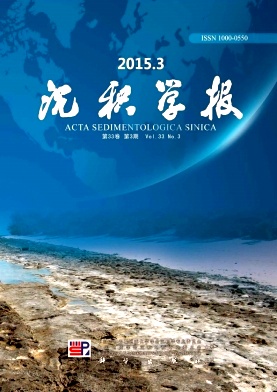The Pore Evolution of Ore-bearing Sandstone and Its Restriction to Mineralization in Liuju Copper Deposit in Chuxiong Basin, Yunnan
doi: 10.14027/j.cnki.cjxb.2015.03.009
- Received Date: 2014-06-10
- Rev Recd Date: 2014-07-14
- Publish Date: 2015-06-10
-
Key words:
- sandstone-type copper deposit /
- cement zonation /
- pore evolution /
- precipitation of copper sulfides /
- Liuju /
- Chuxiong basin 2015
Abstract: Based on Liuju copper deposit is one of the typical terrestrial sandstone-type deposits located in the Chuxiong red-bed basin of southwest China. The mineralization occurred in the interface between purple sandstone and grey sandstone of medium-fine grained sandstone strata, sandwiched between two purple silty mudstones. Besides, there coexists a horizontal metallic mineral zonation in this transitional zone from purple sandstone to grey sandstone:hematite, chalcocite, bornite, chalcopyrite and pyrite. Aiming at the relationship between mineralization and characteristics of cement and pore in sandstone, this paper has carried out the analysis of the statistical data of detrital contents, sorting coefficient, cement characteristics, pore types and the test results of porosity and permeability of each lithologic layer. The results shows that, the medium-fine grained feldspar quartz sandstone in the first Liuju sub-member of upper Cretaceous Matoushan group (K1ml1) was the most effective channel for fluid migration because of the high detrital content, low sorting coefficient, high porosity and high permeability. The place where organic matters was rich in locally in the sandstone strata of K1ml1 was changed into hydrocarbon source rocks during the middle diagenetic stage. The diagenetic pore water beared organic matters could evolve into acid reducing fluid by chemical reactions with wallrock. The acid reducing fluid and the alkaline oxidizing fluid from purple sandstone could form stable convection in the fluid migration channel of sandstone. Under the control of pH and Eh, cement zonation of ferruginous facies, calcite-dolomite carbonate facies, siliceous carbonate facies, siliceous facies formed in the sandstone strata from purple part to grey part. In the process of the water-rock interaction, the acid reducing fluid with hydrocarbons played a part in dissolving ferruginous and carbonate cements formed in the early diagenetic stage, which could open up inter grain pore for precipitation of copper sulfides. Besides, the process could also provide sulfur source by sulfate reduction. While, the alkaline oxidizing fluid was controlling the precipitation of the carbonate cements and copper sulfides in the interface of physicochemical conditions, which was the controlled conditions to the coexistence of cement zonation and metallic mineral zonation. When the hydrocarbon generation declined, the alkaline oxidizing traversed the neutral plane of Eh and pH value and conducted the corrosion of siliceous cements and quartz grains in grey sandstone, which could open up solution pore for more mineralization room and cause metasomatism between metallic sulfides. The water-rock interaction is the main factor of controlling the formation of pore for mineralization room and precipitation of cements and copper sulfides in diagenetic stages of sandstone strata.
| Citation: | WU HaiZhi, HAN RunSheng, QIU WenLong, HU YuZhao, WU Peng. The Pore Evolution of Ore-bearing Sandstone and Its Restriction to Mineralization in Liuju Copper Deposit in Chuxiong Basin, Yunnan[J]. Acta Sedimentologica Sinica, 2015, 33(3): 512-523. doi: 10.14027/j.cnki.cjxb.2015.03.009 |






 DownLoad:
DownLoad: